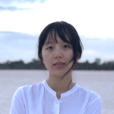
Applications - Echidna
Applications, recent results, publications.

Showing 941 - 960 of 1344 results

Applications, recent results, publications.
You are invited to submit to the various awards from ANSTO, User Advisory Committee (UAC) and Australian Neutron Beam User Group (ANBUG).

A world-class national research facility that uses accelerator technology to produce a powerful source of light-X rays and infrared radiation a million times brighter than the sun.
ANSTO facilitating coordinated effort to find the nexus that leads to chronic kidney disease of unknown origin
Combined imaging approach characterises plaques associated with disease.
Two early career nuclear scientists who received international scholarships have spent time in the Nuclear Fuel Cycle group at ANSTO are making progress on their work to improve nuclear fuel.

ANSTO's Sydney locations are home to the Open Pool Australian Light-water (OPAL) multi-purpose reactor, the Centre for Accelerator Science (CAS), the Australian Centre for Neutron Scattering, the National Research Cyclotron and the National Deuteration Facility.
Study reveals that properties of polycrystalline materials can be derived from microscopic single crystal samples



You are invited to submit to the various awards from ANSTO and the User Meeting 2025 organising committee.

An initiative for National Science Week 2024 the Shorebirds Competition addresses the 2024 theme for National Science Week, ‘Species Survival’ and provides unique cross-curricula learning for Australian primary students in Years 3 to 6.

The Radon Analytical Laboratory operates a comprehensive suite of instrumentation for the monitoring and analysis of natural radioactivity resulting from radon, thoron and their progeny.

Accurate low level tritiated water (HTO) data is an essential tool for groundwater dating and understanding groundwater recharge processes.

ANSTO is an experienced provider of Teacher Professional Development for Australian and International teachers and our courses cover a wide range of topics. Hear from expert speakers, receive new education resources, and develop lessons for your own class.
